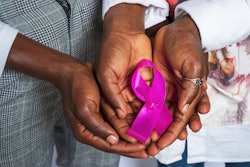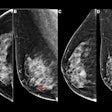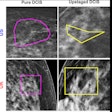High social adversity is tied to a higher incidence of triple-negative breast cancer (TNBC) among U.S. Black women, according to research published October 14 in JAMA Network Open.
A team led by Alexandra Hernandez, MD, from the University of Miami in Florida found that age-standardized TNBC incidence rates were highest in the highest social adversity category and incrementally decreased by each group based on neighborhood socioeconomic status.
“As subtype is intrinsic to tumor development, these findings suggest an early and critical source of downstream breast cancer survival disparities,” the Hernandez team wrote.
Prior research shows that TNBC disproportionately affects non-Hispanic Black women, especially those who live in disadvantaged neighborhoods. Researchers in the radiology space continue to study how societal barriers may play a role in these trends, including how disadvantaged patients more often don’t attend follow-up imaging appointments.
Hernandez and colleagues studied potential associations between social adversity and TNBC incidence in Black women in the U.S. They used data collected from 13,340 Black women who were included in the Surveillance, Epidemiology, and End Results (SEER) program. The women had an average age of 58.
Using the Yost Index, the team found that women with the highest levels of social adversity faced the highest incidence of TNBC.
TNBC incidence rate by neighborhood socioeconomic status | ||
Yost Index quintile | Incidence rate | Incidence rate ratio |
Group 1 (highest social adversity category) | 19.3 | 1 (reference) |
Group 2 | 17.9 | 0.93 |
Group 3 | 18.2 | 0.94 |
Group 4 | 19.0 | 0.98 |
Group 5 (lowest social adversity category) | 17.2 | 0.89 |
The study authors suggested that addressing the inequities faced by these women requires targeted investment in disadvantaged neighborhoods. This includes enforcing environmental regulations, expanding access to nutritious foods, and funding community safety initiatives.
“Policies that address redlining through equitable housing and infrastructure investment may help dismantle the social and environmental conditions that contribute to TNBC disparities,” they wrote.
The authors also suggested that geospatial visualization could inform future studies that aim to evaluate county-level risk factors and which high-risk counties should implement cancer control interventions.
Read the full study here.




















